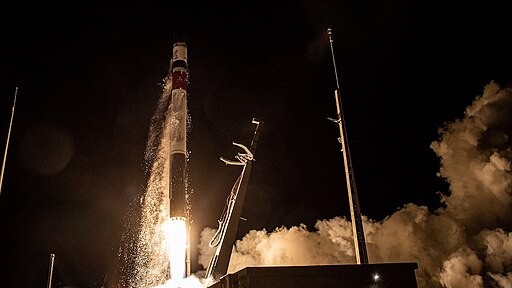California-based Rocket Lab is set to launch a mission from the spaceport on the U.S. East Coast in a few days, but unlike its previous mission, the event will not be broadcast.

Gearing Up for a Secret Launch
Wallops Flight Facility, a rocket launch site in Virginia, announces its plan to support a Rocket Lab launch scheduled between June 15 to 20. Rocket Lab used to regularly webcast the launches of the Electron orbital rocket, which serves as the company's workhorse vehicle. The private spaceflight company offers launching services to small satellites to the orbit of the Earth.
On May 7, 2023, two TROPICS CubeSats for NASA were lifted off by the Rocket Lab Electron from Launch Complex 1 at Māhia, New Zealand. The two-hour launch was shown in live coverage on NASA's YouTube page. Wallop's official confirmed on June 13 that is no livestream planned for the next liftoff event and that the Wallops Visitor Center will not be available for launch.
There are speculations regarding this unusual mission by Wallops, but skeptics are pointing to the first-ever launch of the new suborbital testbed rocket by Rocket Lab. The suborbital rocket Hypersonic Accelerator Suborbital Test Electron (HASTE) is developed to support testing technologies for the hypersonic craft.
Derived from the workhorse Electron, HASTE can also draw up to 1,540 pounds of payload. Meanwhile, Electron can carry a maximum of 660 pounds of load to low Earth orbit. The hypersonic suborbital rocket can offer reliable flight test opportunities required to develop advanced hypersonic system technology.
HASTE also features an improved version of the Electron's kick stage, designed to deploy hypersonic payloads. Rocket Lab confirmed it on April 17 when the hypersonic suborbital rocket was introduced. In that same statement, the company also announced the scheduled debut of the suborbital rocket without giving further details on the mission.
The Rocket Lab National Security will be the one to operate the hypersonic suborbital rocket primarily. It is a fully owned subsidiary of the Rocket Lab company that aims to offer launch missions for the U.S. defense and intelligence organizations and its allies. In another statement from Rocket Lab representatives, the company discloses that the inaugural launch, which will take place in the first half of the year, will be done for a confidential customer.
READ ALSO: Rocket Lab Launches First Satellite Built and Launched from New Zealand
What is a Suborbital Space Flight?
A suborbital space flight refers to a spacefaring event where the rocket approaches outer space, but its route crosses the surface of the body where it came from. In short, it is a spaceflight that does not complete one orbital evolution. Aside from the fact that it cannot reach escape velocity, the spacecraft cannot turn into an artificial satellite.
A spacecraft that reaches a speed of 28,000 km/h or more will continuously fall around the Earth instead of falling back to the ground. The same principle keeps the Moon in its orbit above the Earth. If a vehicle is launched into space but does not have enough speed to stay in space, it falls back to Earth and moves in a suborbital trajectory.
In astronomy, the space just right above the surface of the Earth seems to be more than just a site to fly through to reach the low-Earth orbit. It also offers training opportunities for future astronauts and their payloads in terms of their routine flights.
RELATED ARTICLE: Rocket Lab Successfully Launches Electron, Brings Its Rocket Back to Earth Under a Parachute
Check out more news and information on Space in Science Times.














